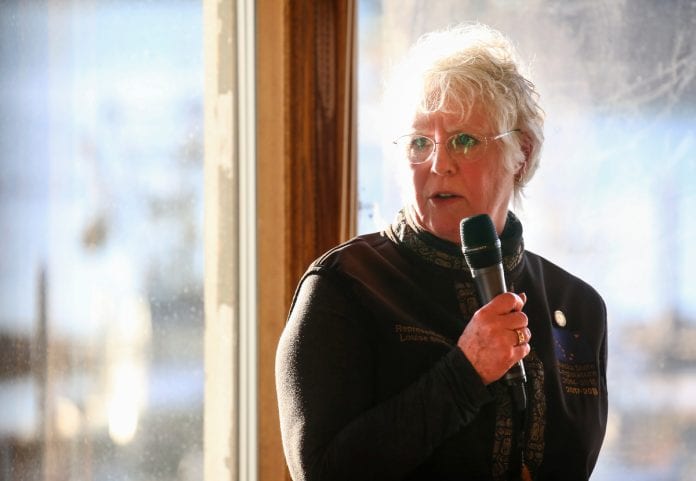Republican gubernatorial candidate Mike Dunleavy grabbed a 123,447-102,654-vote edge over Democratic opponent Mark Begich, with 98 percent of votes counted on Nov. 6, to become Alaska’s next governor.
Rep. Don Young, R-Alaska, likewise, held a 126,655-vote lead over independent challenger Alyse Galvin, who had 107,165 votes, assuring him a return to the U.S. House seat for a 24th term.
Ballot measure 1, the Stand for Salmon initiative aimed at providing strong protections to fish habitat in Alaska, also went down in defeat, by a vote of 145,997 to 83,479.
“Alaskan voters made the right choice to protect our jobs, our economy and our communities,” said Kati Capossi, campaign manager for Stand for Alaska. The defeat of the ballot measure sent a clear message that Alaskans are not in favor of outside interests’ attempts to regulate our land and resources, she said. The bulk of Stand for Alaska’s campaign funds, in fact, came from $1 million contributions from oil and gas and mining entities headquartered in the Lower 48 and Canada.
“Despite being outspent by a corporate misinformation campaign, Alaskans showed up in droves today to vote yes on Ballot Measure 1,” said Gayla Hoseth, a Yes for Salmon initiative sponsor and second chief of the Curyung Tribal Council in Dillingham. “That is a victory in and of itself. We are in the midst of a new era where Alaskans are ready to see stronger salmon protections and more responsible development in our state.”
Alannah Hurley, executive director of United Tribes of Bristol Bay, said that “election results do not change the facts: science proves that Pebble (mine) cannot coexist with salmon, and our region, and Alaskans in general oppose the project because it is the wrong mine in the wrong place.”
The top three contributors to Yes for Salmon, Alaska Center, Wild Salmon Center, $202,000 and the New Venture Fund contributed in total less than $1 million.

In Alaska’s 32nd House District, meanwhile, Rep. Louise Stutes, R-Kodiak, with 2,512 votes, was re-elected to another term, over Democratic challenger Dennis Harris, with 1,548 votes and nonpartisan candidate Sandra Katelnikoff-Lester, with 597 votes.
“My district has been very kind and very supportive of me,” Stutes said. Her priorities in the upcoming session of the Alaska Legislature will be the Alaska Marine Highway System and fisheries, she said. Stutes also had compliments for Democratic contender Harris, “a really nice young man and he worked really hard,” she said.
Dunleavy issued a statement saying he was “deeply humbled” by the trust voters placed in him. “Now begins the real work of restoring trust between the people and their government,” he said. He vowed to protect and restore the Permanent Fund Dividend, end the state’s crime spree and “unleash Alaska’s unparalleled economic potential.”
Begich said he had spoken with Dunleavy to congratulate him on becoming Alaska’s next governor.
“While we have many differences, we are Alaskans first,” he said. “That is why I let him know that I stand ready to help move Alaska forward and create a better future for all Alaskans. The stakes are too high for divisive politics or policies and we must come together and put the future of our state above all else.”
Galvin also released a statement early on Nov. 7 saying she had reached out to Young to congratulate him on his victory.
While he didn’t answer, “I respect Representative Young’s continued service to our great state as a veteran, a former educator, and a public servant,” Galvin said. “While he and I disagree fundamentally on many issues, I respect his perseverance and hope that he will be successful as our state’s long representative for all Alaskans.”
Young told news media in Anchorage on election night that “I’ve always said it’s not about Don Young, it’s about getting the job done.”
As to the Democrats gaining a majority in the U.S. House, Young said, “It’s going to be interesting right now. When you have a smaller majority, it’s better to work with a small minority.”















